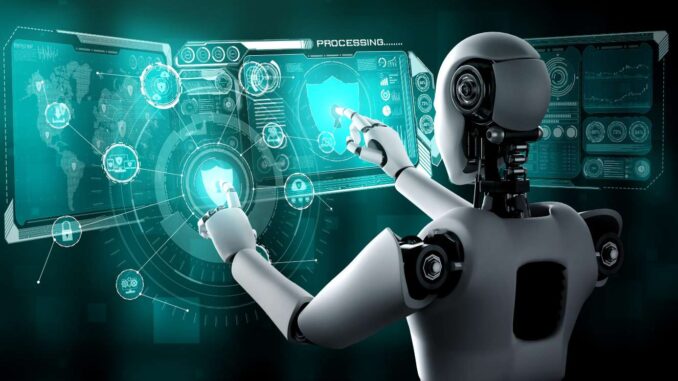
AI can be categorized based on functionality to highlight its various applications and operational capabilities. Here are the main categories of AI based on functionality:
### 1. **Reactive Machines**- **Definition**: These are basic AI systems that do not have memory and cannot learn from past experiences. They operate solely based on the current input they receive.








– **Characteristics**: They respond to specific stimuli with pre-defined actions.
– **Example**: IBM’s Deep Blue, the chess-playing computer, which analyzed board positions and calculated the best move but had no memory of past games.
### 2. **Limited Memory**
– **Definition**: This type of AI can retain a limited amount of information from past interactions and use it to make better decisions in the present.
– **Characteristics**: It learns from historical data but does not retain data permanently; it is context-aware and can adapt based on recent experiences.
– **Example**: Self-driving cars that accumulate data about road conditions, previous drivers’ behaviors, and traffic patterns to make navigation decisions.
### 3. **Theory of Mind**
– **Definition**: This is an advanced concept of AI that aims to understand human emotions, beliefs, intentions, and social cues.
– **Characteristics**: It would involve recognizing that other entities have their thoughts and feelings.
– **Example**: This type is mostly theoretical at this stage and has not been realized but is a subject of ongoing research in robotics and AI development.
### 4. **Self-aware AI**
– **Definition**: An even more advanced form of AI, which possesses self-awareness and consciousness. This type is highly theoretical and exists mostly in science fiction.
– **Characteristics**: Such AI would perceive its own internal states and understand its existence relative to the environment and other entities.
– **Example**: Self-aware AI has not been developed. It remains a speculative concept, often represented in popular media.
### 5. **Narrow AI (Weak AI)**
– **Definition**: AI systems designed to perform a specific task or a set of tasks effectively within a limited context.
– **Characteristics**: They function under a narrow set of constraints and are optimized for specific operations.
– **Example**: Virtual assistants (like Siri or Google Assistant), recommendation systems (such as those used by Netflix or Amazon), and image recognition software.
### 6. **General AI (Strong AI)**
– **Definition**: This refers to AI that exhibits human-like cognitive capabilities and can perform a broad range of tasks at a level comparable to that of a human being.
– **Characteristics**: General AI can learn from experience, understand complex ideas, and adapt to new situations. It is still a theoretical concept.
– **Example**: Currently, no systems embody general AI, but it is a goal for future AI research and development.
### 7. **Superintelligent AI**
– **Definition**: A form of AI that surpasses the most intelligent and capable human minds in virtually every field, be it creativity, problem-solving, or social intelligence.
– **Characteristics**: Such an AI would possess abilities far beyond human capability.
– **Example**: Superintelligent AI is a subject of speculation and debate; as of now, it does not exist.
### 8. **Expert Systems**
– **Definition**: AI systems that use a knowledge base and inference rules to solve complex problems within a specific domain.
– **Characteristics**: They mimic the decision-making ability of human experts and are often used in specialized fields.
– **Example**: Medical diagnosis systems that use a set of rules to determine health conditions based on patient data.
### 9. **Machine Learning (ML)**
– **Definition**: A subfield of AI that enables systems to learn from data and improve their performance without being explicitly programmed for each specific task.
– **Characteristics**: Algorithms are trained on datasets and can recognize patterns to make predictions or decisions.
– **Example**: Fraud detection systems that learn from transaction patterns to identify anomalies.
### 10. **Deep Learning**
– **Definition**: A specialized subset of machine learning that employs neural networks with many layers (deep architectures) to analyze various forms of data.
– **Characteristics**: It is particularly effective for image and speech recognition tasks, as well as natural language processing.
– **Example**: Technologies like facial recognition, voice assistants, and autonomous systems often employ deep learning techniques.
### Conclusion
Understanding AI based on functionality helps clarify its current capabilities and potential. Each category represents varying degrees of complexity and application, from simple reactive systems to highly sophisticated theoretical constructs. As AI research continues to evolve, these categories may expand or change to better reflect advancements in technology and its implications for society.

Leave a Reply